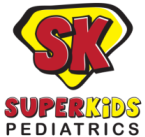Breastfeeding 101
“Breastfeeding is beautiful and amazing!
Deciding to breastfeed can give your baby the best possible start in life. While it takes time, dedication, and a whole lot of patience, as a Mom and Pediatrician, I can assure you, the effort it’s totally worthy!!” Dr. Medina
Benefits of Breastfeeding for your baby:
- Breastfeeding’s physical contact helps create a special bond between you and your baby.
- Human milk has many benefits:

- Easier to digest
- Does not need to be prepared
- It’s always available
- It has all the nutrients, calories and fluids your baby needs to be healthy
- It has growth factors that ensure the best development of your baby’s organs
- Provides immune support to protect your baby form infections.
Benefits of Breastfeeding for you:
- It helps release hormones in your body that promote mothering behavior.
- It helps return your uterus to its usual size
- It helps burn more calories (which may help in loosing extra weight you gained during pregnancy)
- It helps delay the return of your menstrual period to help keep iron in your body
- Reduce the risk of ovarian and breast cancer
You should breastfeed within the first hour after birth if you and your baby are physically capable of doing so. After delivery, your baby should be placed on your chest or stomach, skin to skin. Try to stay with your baby as much as you can in the hospital (rooming in). If you need help, asks the doctors and nurses at the Hospital, your Pediatrician, a lactation specialist, or a breastfeeding support group.
How it works…
Colostrum:
Colostrum is the first milk your body makes. It is filled with all the nutrient your newborn needs it is rich in Immuneglobulins to help your baby’s immune system, and has a thick yellowish appearance. It may seem like a small amount, but your baby only need less than 1 tablespoon per feeding on the first day, and, about 2 tablespoons per feeding on the second day.
Milk Coming in:
After Colostrum, Milk comes in 2 – 5 days after your baby is born. Colostrum increases quickly in volume and becomes milky white transitional to milk. Signs to look for: Full and tender breasts, leaking of milk, seeing milk around the baby’s mouth, hearing your baby swallow when fed.
Let-down:
Let-down is the reflex that creates the flow of milk from the back of the breast to the nipple.
Important Tips:
- Always take time to get comfortable.
- Make sure your baby is latched on correctly. This means your baby has opened his mouth wide and is well back on the breast, taking both the areola and nipple far back into his mouth.
- Follow baby’s cues and signs of hunger to know when it’s time to be fed.
- Frequent feedings help stimulate the breast to produce milk more efficiently.
***The more milk your baby takes from your breast, the more milk you will produce!***
How can you tell your baby is getting enough milk?
- Your baby has frequent wet and dirty diapers
- Your baby appears satisfied after feedings.
- Milk is visible during feedings
- Your baby is gaining weight after 4-5 days of life
Handling and Storing Breast Milk:
Remember the Rule of 4’s: 4 hours at room temperature and 4 days in the refrigerator. Follow CDC and AAP temperature requirements below as a guide:
- Room Temperature (up to 77°F) – Use milk within 4 hours
- Refrigerator (39°F or colder) – Up to 4 days is best
- Freezer ( 0°F or colder) – Up to 9 month
- Deep Freezer (-4°F or colder) – Up to 12 month
Remember, it is important to:
- Be sure to wash hands before handling breast milk and to use clean storage containers. Avoid using ordinary plastic storage bags or formula bottle bags (unless it’s specified they can be used to store and freeze liquids), as these could easily leak or spill. Review the FDA’s Cleaning Breast Pump guidelines for breast pump parts.
- Always manage your inventory using “FIFO” (First In/First Out). This means that the oldest milk in stock is always the one you will use next to feed your child. This stresses the importance of labeling your stock individually and always placing towards the back any new addition to your stock to simplify the process. Label with pumped date (PD) and hour. If milk will be administered by a child care provider, don’t forget to clearly label your child’s name.
- Don’t mix milk from different batches for storage, especially if one is frozen.
- Store breast milk in small batches of 2-4 ounces to prevent waste.
Visit Tips for Storing Breast Milk During Power Outage or Traveling to be prepare.
Feel free to call us at SuperKids Pediatrics to schedule your Consultation Visit for Breastfeeding support and check your baby’s weight.
Additional information and/or support programs in Palm Beach:
- Breastfeeding Coalition Palm Beach County: http://www.pbcbreastfeeding.org/
- La Leche League: http://www.lalecheleague.org/
- Lactation Consultans of Palm Beach County: http://www.lactationconsultantspbc.com/dir.html
by Lizaida Medina Candelaria, MD FAAP
Dr. Medina is a Board Certified Pediatrician and an active member of the American Academy of Pediatrics and Palm Beach Pediatric Society. Her private practice, SuperKids Pediatrics, is located in Palm Beach Gardens. Office Phone: 561-619-2460 – Web: www.skpediatrics.com – Facebook: SuperKids Pediatrics
9121 N. Military Trail Ste. 102
Palm Beach Gardens, FL 33410





